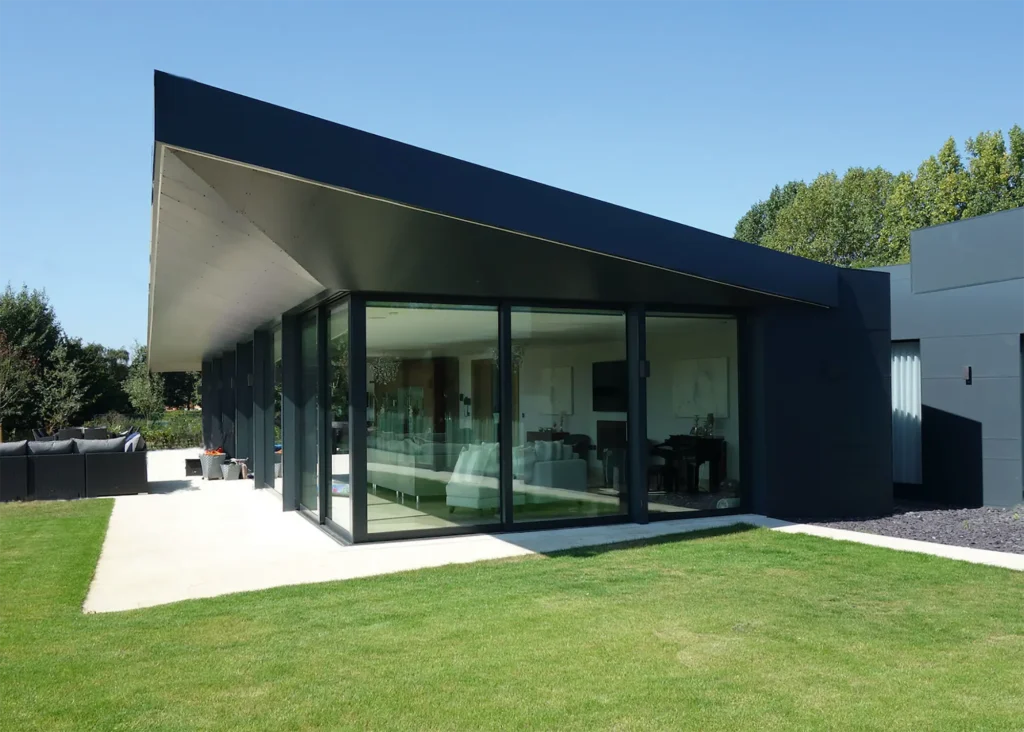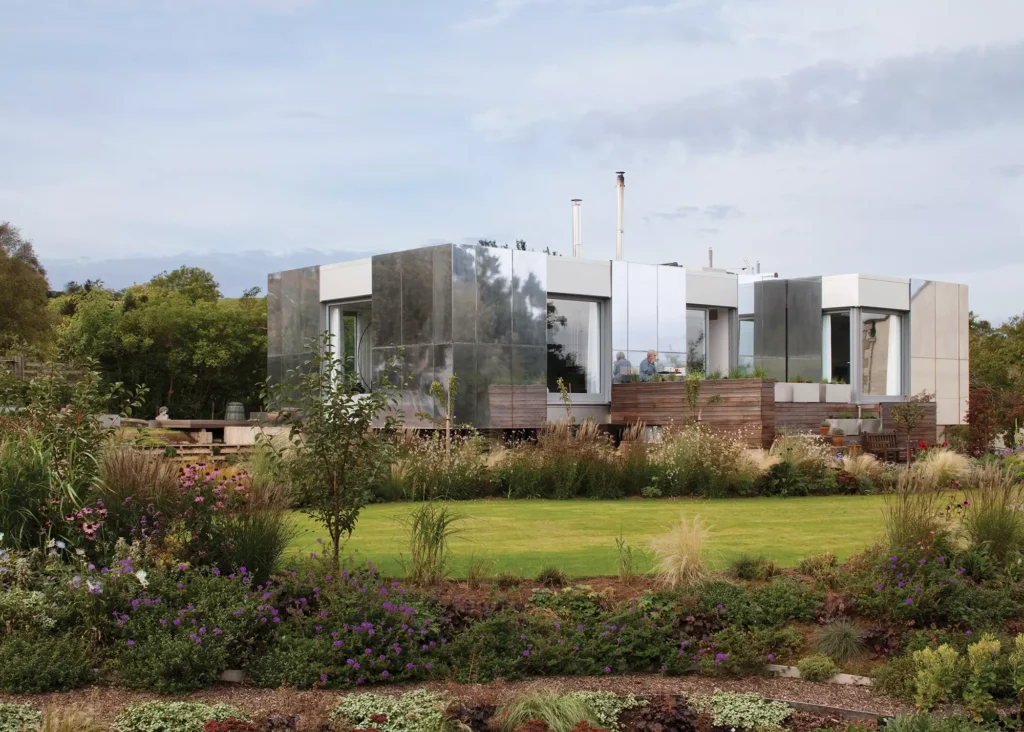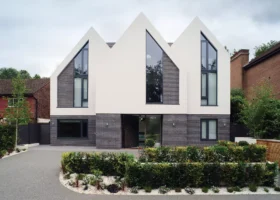
Use code BUILD for 20% off
Book here!
Use code BUILD for 20% off
Book here!At present, one of the main challenges that self builders face is government planning policies that make it very difficult to build new homes in the countryside. At the Build It Live shows, visitors often ask me whether they can get around this problem by applying for a ‘paragraph 80’ house – namely, a home that planners will make an exception for due to the outstanding quality of its design. So, what is paragraph 80, and is it a realistic option for self builders?
In England, national policies are set out in the National Planning Policy Framework (NPPF), and paragraph 80 of that document seeks to avoid the development of isolated homes in the countryside. It makes some exceptions, including the provision of housing for rural workers and the creation of new homes by reusing existing buildings. Another of the exceptions, numbered subsection (e), allows for a design of exceptional quality, in that it:
The policy has a long pedigree. It appears first as ‘Gummer’s Law,’ part of a policy document (Planning Policy Guidance 7) introduced in 1997 by the then Environment Secretary, John Gummer. He wanted to restrict development in the countryside but also envisaged the creation of a new generation of grand country houses.
Learn More: An Expert’s Guide on How to Get Planning Permission in the Countryside

This contemporary home in rural Bedfordshire by Tye Architects was constructed under the Paragraph 80 planning process
Though the new Labour government wanted to scrap it, the exception reappeared in Planning Policy Statement 7 in 2004, which allowed new homes in the countryside (very occasionally) if they were of outstanding quality and design. The first NPPF, published in 2012, set out a similar approach in its paragraph 55, which was then updated to paragraph 79 in NPPF 2018, and finally to paragraph 80 in the most recent NPPF 2021.
Though there has been some minor variation in the wording of each of the policies, if you hear people talking about building PPS7 homes, paragraph 55 homes, paragraph 79 homes, or paragraph 80 homes, they are all referring to the same thing.
CASE STUDY Paragraph 80 home by Studio BarkThe Black Barn is a shining example of sustainable design, conceived by the creative architects at Studio Bark. The striking home pays homage to the black agricultural barns that have graced the East Anglian countryside for years.
After a meticulous 11-week planning process, (under what was then paragraph 79), the property secured approval from the Suffolk Coastal District Council, paving the way for its construction.
The home is finished in black timber cladding, which references the vernacular, albeit in a bold and contemporary way. It is a floating sculptural form surrounded by wild grass meadow. Its shape was designed to have a minimum impact on the environment, and the form evolved from environmental considerations. This includes solar heat gain, shading and passive ventilation. The home is totally off-grid, and all the construction materials used were locally sourced. More Inspiration: Countryside Self Build Projects: Design Ideas and Expert Advice |
Premium Content
Not sure where to start with your plot search? Kick-start the journey with Build It’s complete downloadable e-guide to finding the perfect self build site. Click below to find out more.
find out more
While paragraph 80 demands that your design be ‘truly outstanding’ and ‘significantly enhance its setting,’ it doesn’t explain what this means or how it’ll be assessed. Whether a design is exceptional is a subjective matter, but the intention is clearly that few proposals should pass.
In practice, very few paragraph 80 applications are submitted each year. Architecture practice Studio Bark maintains a database of paragraph 55, 79, and 80 applications and, as of March 2023, had records for 219 submissions in England since 2012. Though its dataset is incomplete (because some councils have not responded to their inquiries, for example), it still suggests that very few self builders have attempted this kind of application.
Perhaps surprisingly, however, many of those applications were successful. Councils granted permission for 138 homes, 63% of the total. 67 were refused (46 of which were also dismissed at appeal), and 12 applications were withdrawn. 80% of applications that were endorsed by a Design Review Panel (a group of experts brought in to assess the design) were ultimately approved. The researchers found approvals across England, including in sensitive locations like areas of outstanding natural beauty (AONB).
Looking for building plots for your self build project? Take a look at PlotBrowser.com to find 1,000s of plots and properties to nationwide, all with outline or full planning permission in place

Even if they’re not a paragraph 80 home, many countryside self builds will adopt striking designs that stand out against the landscape. This amazing zero-carbon home – situated in a green belt location with views out over the Severn Estuary – has been designed by Paul Archer Design with a reflective panelled exterior. Photo: Will Pryce
If paragraph 80 has a decent success rate, then why are so few applications submitted? The main challenges are complexity and cost. Applicants spend eye-watering sums on preparing their applications (easily more than £100,000), and houses of exceptional design can be expensive to build. If an application is not successful, then time and money are wasted.
Given that design is so subjective, there is no magic formula when it comes to paragraph 80 applications, and applicants must understand that they are taking a gamble. There are a few steps you can take, however, to improve your chances. The first is to appoint the right architectural practice.
You should choose a firm with experience of paragraph 80 homes – it’s such a niche area of planning and design that it’s essential your architect has been through the process at least once before. You can also learn from others who have applied successfully in the past, particularly in your local council area.
The meaning of exceptional design has been tested in applications and appeals across the country, and a good planning consultant can help you interpret the lessons from this experience. Finally, you yourself must be committed to the process – determined to create something ground-breaking that contributes to improving the surrounding landscape.
Sadly, while paragraph 80 is one way to get around the government’s determination to avoid isolated new homes in the countryside, it is not a planning loophole. Very few take advantage of it, and the challenges (and costs) are daunting – but for the brave, it can be a great way to create a unique home in a countryside location.
More from Martin: Planning Applications: What Do Your Local Council Planners Want?
